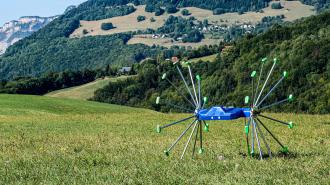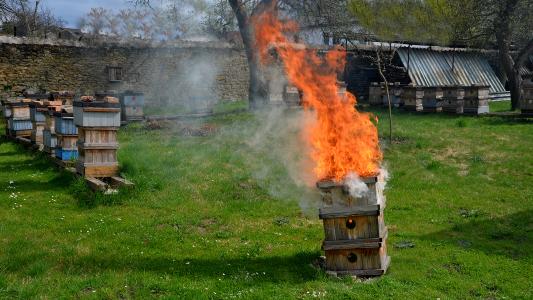French startup Meropy has developed an agricultural robot that autonomously inspects crops from both above and below, saving farmers time and money.
The challenge: A lot can go wrong between the time crops are planted and when they’re harvested — pests can invade a field, diseases can spread through it, and weeds can proliferate, stealing resources crops need to thrive.
Regular crop monitoring can help farmers catch these problems early, before they lead to significant losses, but manually checking all the plants on a large farm can be time consuming and labor intensive.
Robots that autonomously navigate fields can relieve farmers of this duty, but their tires and treads can damage crops. Satellites and drones don’t carry this risk, but because they only see plants from above, they can miss issues hidden beneath their leaves.
What’s new? Meropy’s agricultural robot SentiV is designed to overcome these issues.
At just 33 pounds, the bot is light, and rather than rolling along on tires, it navigates fields on rimless spoked wheels. Because these make much less contact with the ground than the wheels traditionally used by farming robots, damage to crops is minimized.

To use SentiV, farmers first set the boundaries of their field in the robot’s software platform. It will then use GPS to roll across the entire area autonomously — according to Meropy, the bot can cover about 50 acres a day.
While on the move, SentiV uses two cameras to image crops from above and below. Data from the cameras is analyzed by AI algorithms trained to spot threats, monitor growth, and identify signs that the plant might need more or less water and nutrients.
To ensure farmers can inspect different types of crops, Meropy designed the agricultural robot to be modular — its width is adjustable, and its height can be changed by swapping in different-sized wheels.
Looking ahead: SentiV is still a prototype, and it’s not clear when Meropy will be ready to start selling a commercial version of the agricultural robot or what it might cost.
The upfront cost of the robot could potentially be offset by savings on fertilizers or pesticides, though. Data from the bot could let farmers know exactly where the chemicals are needed, keeping their deployment to a minimum, which would also be a boon for the environment.
We’d love to hear from you! If you have a comment about this article or if you have a tip for a future Freethink story, please email us at [email protected].






